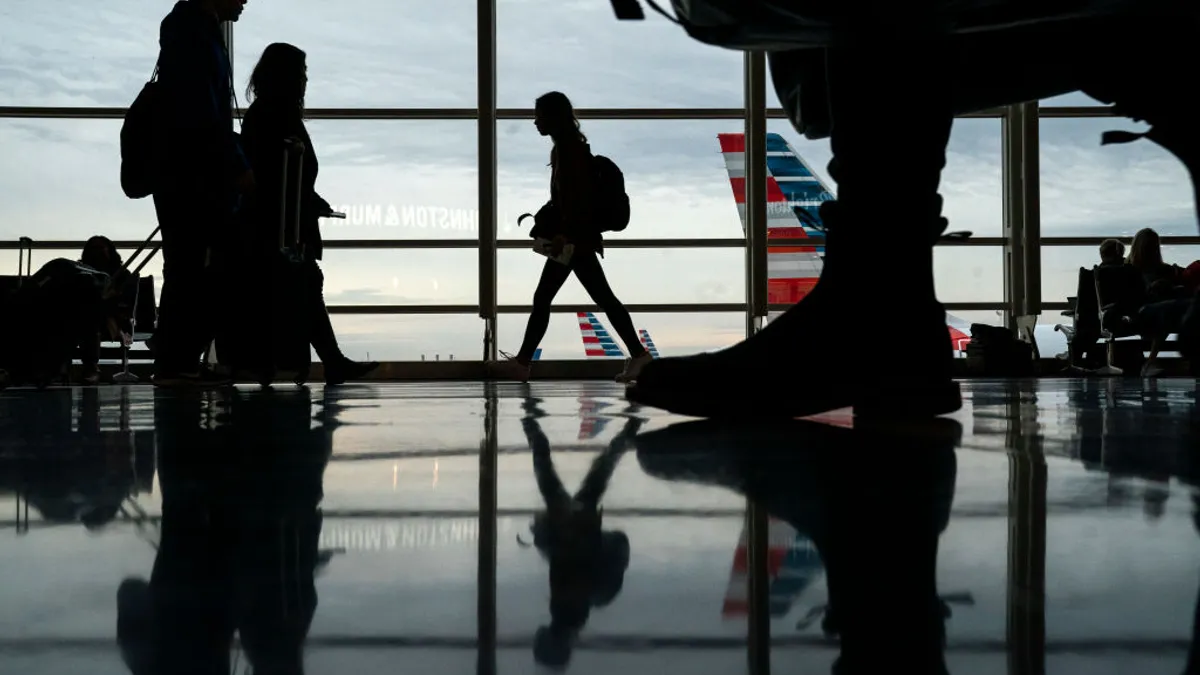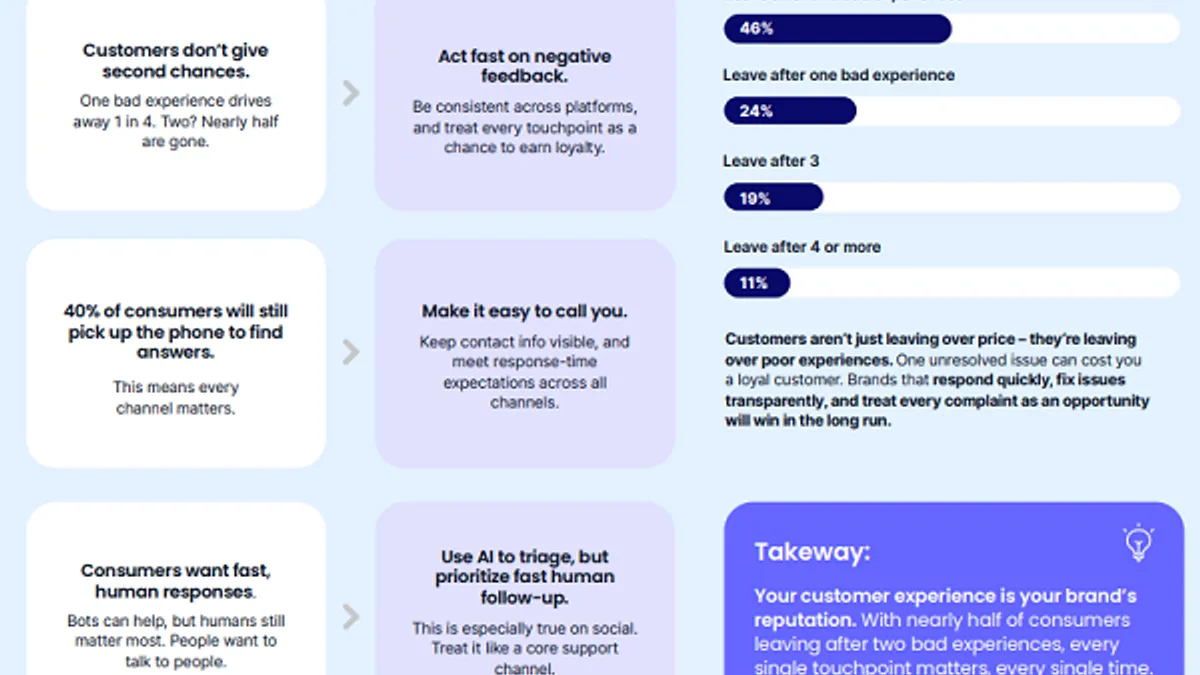Consumers recently have become more loyal to the brands they shop. According to a survey from e-commerce marketing platform Yotpo released last November, a quarter said they were more brand loyal than the previous year.
Helping to drive customers to return are a brand's product, price point, customer service and its loyalty program. In recent years, several retailers, including Macy's, Target, H&M and Nordstrom, added new options to their loyalty programs.
But when COVID-19 made its way to the U.S., many consumers strayed from normal shopping patterns and began stockpiling products. Amazon notified customers in March that certain household staples were out of stock as more consumers began shopping online. Amazon said in a statement at the time it was "working around the clock with our selling partners to ensure availability on all of our products, and bring on additional capacity to deliver all of your order."
Costco CFO Richard Galanti similarly said in March that the company's procurement team was working with existing suppliers and new sources in order to keep up with increased consumer demand and restock shelves.
But those out-of-stocks may be driving consumers to seek alternative brands. A McKinsey report found that more than 75% of consumers have tried new brands, places to shop or methods of shopping so far during the pandemic. Product availability was the number one reason consumers sought out new retailers or products in the past couple months, followed by better prices and promotions.
The most frequent problems experienced, however, aren't necessarily the most detrimental to a customers' loyalty to a retailer, according to a study from the Wharton School's Baker Retailing Center and WisePlum. "[N]ot all problems are created equal in their impact on customer loyalty. In fact, the top 10 most frequent problems were different from the topmost damaging problems," the report stated.
Among the most damaging problems experienced were a difficult returns process and a hard-to-navigate website or app, whereas the most frequent problems centered around the availability of products, the report found.
It's how retailers and brands respond to such issues that helps protect the customer loyalty they've built with consumers.
The discussion forum on RetailWire asked its BrainTrust panel of retail experts the following questions:
- Do you think retailers have risen to the occasion in recent months in the eyes of consumers or have they largely fallen short?
- What do you see as the best ways for retailers to "win the loyalty" of consumers at this point in time?
Here are six of the most insightful comments from the discussion. Comments have been edited by Retail Dive for length and clarity.
Mistakes happen, but they need to be fixed
Neil Saunders, Managing Director, GlobalData Retail: Having things go wrong does not destroy loyalty per se. Not addressing, fixing, and apologizing for those things is what causes resentment. Amazon recently messed up one of my deliveries by sending it to the wrong house. A simple web chat that lasted three minutes resolved the issue and new products were sent out (a full refund was also offered). I was impressed with the service and it made me more loyal to Amazon – and more likely to renew our Prime membership – because I know Amazon will correct any mistakes that are made. And mistakes do happen, no matter how good the retailer.
A frictionless end-to-end experience will create loyalty
Ken Morris, industry thought leader: It has been a mixed bag with some retailers rising as others have fallen. Inventory issues have many causes from supply chain interruptions to antiquated legacy systems. Perpetual inventory in real-time has not permeated retail yet. Synchronicity from stores to the web to wholesale are required to compete against Amazon, that is their secret sauce, but technology investments by brick-and-mortar retailers to achieve that end have not been made. Reserving inventory, returns management and frictionless service are the way to win and keep your customers.
Optimize the basics
Rodger Buyvoets, CEO and founder, Crobox: Many issues the research brings up fall outside of a retailer's scope of control (e.g., product availability). I think retailers have done what they can to meet many of these challenges in a very short time. The real test is to be seen: How will retailers follow up to transition to a digital-first approach? To win the loyalty of their consumers means optimizing the basics – free-returns, priority pick-ups, seamless customer experiences, etc. In the end, the retailers that foster loyalty will be the ones who offer better personalization, transparent communication, and a digital experience that goes above and beyond.
An emotional connection creates loyal customers
Shep Hyken, Chief Amazement Officer, Shepard Presentations: Some retailers are better than others at connecting with customers. The emotional connection that drives not just repeat business, but loyal repeat business, is more important than ever. Customers need convenience in their lives. Friction in the ordering or delivery process will cause a customer to jump to a competitor. Friction with returns will potentially cause a customer to never come back. The formula is simple, but not necessarily easy. It's a combination of the retailer having what the customer wants, delivering it with good customer service, and creating a convenient experience. Throw in some empathy and you may win the loyalty of your customers.
React swiftly to correct issues that arise
Kathleen Fischer, Director of Retail Marketing, enVista: Unfortunately, most retailers struggled in recent months as they had to shift to BOPIS or ship from store to meet consumer needs. The key to keeping loyal customers returning is to work to meet and exceed customer expectations but when things go wrong (as they often do), be quick to react and try to fix the problem.
Focus on execution of services
Mark Ryski, founder, CEO and author, HeadCount Corporation: The massive disruption and shift in consumer behavior has caused challenges from end to end, from the supply chain to the end customer. While the disruption and impact on customer experience would make it seem as though retailers have fallen short, in the current context of a pandemic and despite the challenges, some retailers have most certainly stepped-up – deepening loyalty with existing customers and winning over new customers. Now more than ever retailers need to focus on basic execution — honing BOPIS/curbside services, maintaining inventory and offering practical solutions for returns.
























